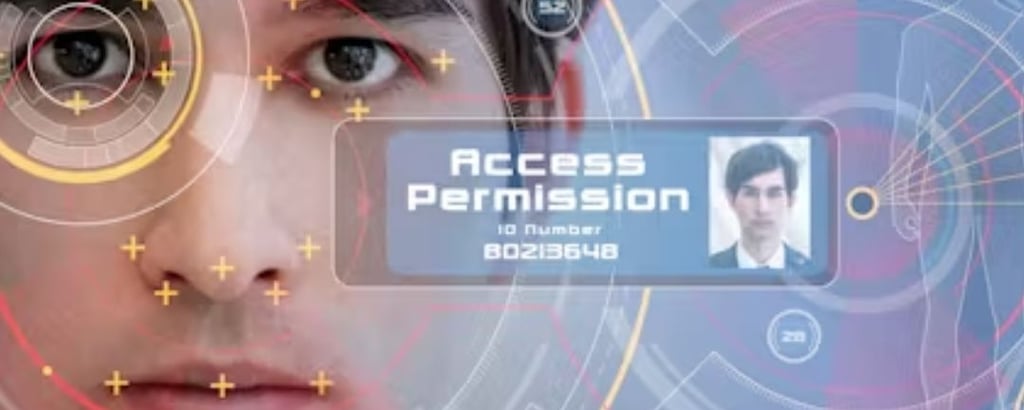The Role of Technology in Modern Facial Treatments
Technology has revolutionized modern facial treatments, offering more precise, efficient, and personalized solutions. Here are some of the key ways in which technology is enhancing facial treatments today:
12/27/20243 min read
Technology has revolutionized modern facial treatments, offering more precise, efficient, and personalized solutions. Here are some of the key ways in which technology is enhancing facial treatments today:
1. Laser Treatments
Laser Resurfacing: Technologies such as CO2 lasers and fractional lasers are used to treat skin imperfections like wrinkles, scars, and sun damage. These lasers work by targeting specific layers of skin to promote collagen production and improve skin texture.
Pulsed Light Therapies: Devices like IPL (Intense Pulsed Light) help with skin pigmentation issues, redness, and sun damage. These technologies work by emitting broad-spectrum light that targets melanin and hemoglobin in the skin.
2. Radiofrequency (RF) Technology
Skin Tightening: RF energy stimulates collagen production by heating the deeper layers of the skin without damaging the outer layer. This leads to firmer, younger-looking skin. Common treatments include Thermage and Exilis.
Non-invasive Facelifts: RF devices can help reduce sagging and improve the contours of the face, providing a non-surgical alternative to facelifts.




3. Ultrasound Technology
HIFU (High-Intensity Focused Ultrasound): HIFU is used for facial lifting and tightening. It works by delivering focused ultrasound energy to the deeper layers of the skin, promoting collagen regeneration without any downtime.
Ultrasonic Skin Cleansing: Gentle ultrasonic waves can be used to exfoliate and deeply cleanse the skin, helping to remove dead skin cells and unclog pores.
4. Artificial Intelligence (AI) and Machine Learning
Personalized Skin Treatments: AI tools are being used to analyze skin conditions more accurately. Some devices are equipped with AI to provide customized skincare routines or facial treatments based on a person's skin type, age, and specific concerns.
AI-powered Diagnostic Tools: Devices with AI technology can detect early signs of skin aging, pigmentation issues, and other concerns, enabling proactive treatment strategies.
5. 3D Imaging and Mapping
Precise Treatment Planning: 3D imaging technology helps practitioners analyze the skin in detail, creating a digital map of facial features. This allows for better-targeted treatments, ensuring the optimal application of lasers, RF, and injectables.
Virtual Consultations: Some clinics are adopting 3D facial imaging for virtual consultations, helping clients visualize how certain treatments will affect their appearance.
6. Microneedling with Technology Integration
Microneedling Devices with Radiofrequency (RF): Combining microneedling with RF energy helps stimulate collagen production and improve skin texture. This dual-therapy treatment is effective for addressing fine lines, acne scars, and overall skin rejuvenation.
Nanoneedling: Nanoneedling technology uses smaller, finer needles to promote skin rejuvenation with less discomfort and downtime compared to traditional microneedling.


7. LED Light Therapy
Targeting Different Skin Concerns: LED light therapy uses different wavelengths of light (red, blue, green) to treat a variety of skin issues. Red light promotes collagen production, blue light targets acne-causing bacteria, and green light addresses pigmentation.
At-home Devices: The availability of LED light masks and devices has made it easier for individuals to incorporate light therapy into their skincare routine at home.
8. Cryotherapy
Facial Cryo Treatments: Cryotherapy uses extreme cold to stimulate blood flow and reduce inflammation. It is often used for facial treatments to tighten the skin, reduce puffiness, and rejuvenate the complexion.
Cryo-Stimulation for Anti-Aging: Cryo-facials are believed to enhance skin elasticity and promote a youthful appearance by stimulating collagen and elastin production.
9. Botulinum Toxin (Botox) and Fillers with Precision Tools
Precision Injecting Devices: New technologies have made botulinum toxin (Botox) and dermal filler injections more accurate. Devices that guide injectors to precise locations on the face improve the efficiency and safety of these treatments.
Smart Syringes: Some advanced injection systems now feature built-in sensors to help control the volume of Botox or dermal fillers, minimizing human error and ensuring more even results.
10. Telemedicine and Virtual Skincare Consultations
Consultations via Apps and Online Platforms: The rise of telemedicine allows people to seek expert advice on facial treatments remotely. Through digital platforms, patients can receive consultations, follow-ups, and product recommendations based on photos or live video.
AI-Driven Apps: Some apps help users track their skincare routines and monitor skin progress through image analysis, providing guidance on the best treatments to use.
Conclusion:
Technology in facial treatments has dramatically enhanced the way skincare and aesthetic procedures are performed. The integration of lasers, AI, ultrasound, and other advanced technologies allows for more precise, non-invasive, and effective treatments with shorter recovery times. As technology continues to evolve, we can expect even more personalized, innovative, and accessible facial treatments in the future.
Facial Bangkok
Discover top-notch treatments for ultimate facial rejuvenation in Bangkok - Thailand.
Guide
© 2024. All rights reserved. Designed by Pimclick SEO Agency
Article
